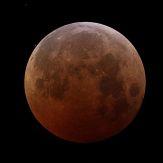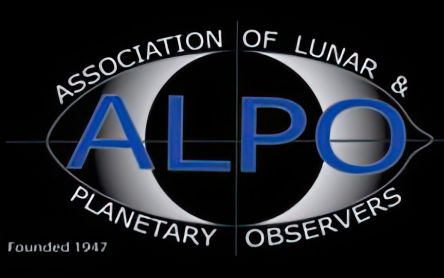
Solar and Lunar Eclipses are some of the most impressive astronomical events the ordinary person can observe without extensive equipment. Solar Eclipses only need Solar filters for binoculars or telescopes, and Solar glasses or even just a simple pinhole projector to safely view. Lunar Eclipses can be viewed by anyone on the night side of the Earth when one occurs, but binoculars or a telescope can make the view much nicer.
Eclipses always come in pairs, two weeks apart, and sometimes we get three. The “Eclipse Season” lasts about 35 days twice a year. The Moon’s orbit is 29.5 days which allows it to align perfectly twice, once at New Moon and once at Full Moon. At other times of the year, the Moon is out of alignment due to the 5 degree difference in the Lunar and Solar orbital planes and Eclipses cannot occur.
Eclipse Blog
It's official...
I am the new Acting Eclipse Coordinator for the ALPO, the Association of Lunar & Planetary Observers. You can reach me by email using our contact form found here.
If and when you would like to report on your eclipse activities and/or post any images to the ALPO Eclipse Gallery or blog, please use the eclipse@alpo-astronomy.org address. Please be sure to follow the guidelines when sending your photos so that they meet the threshold of being sufficiently documented to be of value for subsequent research and evaluation. Please see my notes on annotating the images below.
In addition to your reports & images being posted on the Eclipse Blog and in the Eclipse Gallery, some items will be selected to be published in the quarterly on-line and print publication, the Journal of the Association of Lunar & Planetary Observers (“JALPO”).
I'm a longtime amateur astronomer but a newcomer to the Eclipse Section, so please bear with me if I'm a little slow to respond or just plain make a mistake or make an etiquette faux pas. I'll learn the ropes and hope to foster enthusiasm for ALPO members to observe and learn more about these special celestial events.
Everyone is asked – even at this late date – to submit their images, sketches, drawings and written reports of any observed eclipses — solar, lunar, annular, total or partial — as soon as possible after the event to the ALPO Eclipse Section Acting Coordinator via the eclipse@alpo-astronomy.org email address for use in his report to the ALPO membership in an upcoming Journal of the ALPO.
In order to make his report as scientifically valid as possible, please include as much observational data as possible including:
- Your name and exact observing location
- Exact date and time of the observation/image exposure
- Exposure timing details
- Estimate of the lunar or solar altitude above your horizon and azimuth (direction)
- Brand and model of the equipment (telescope, mount, eyepiece, camera, mobile phone camera brand and model)
- General weather conditions (ambient temperature, sky conditions, etc.)
- Your own commentary about what you observed
I look forward to working with all the long-time contributors to the Eclipse Section and hope to encourage newcomers to join our ranks and contribute to the Eclipse Section!
Clear skies,
John O'Neal (“NC Stargazer”)
Acting Eclipse Section Coordinator
